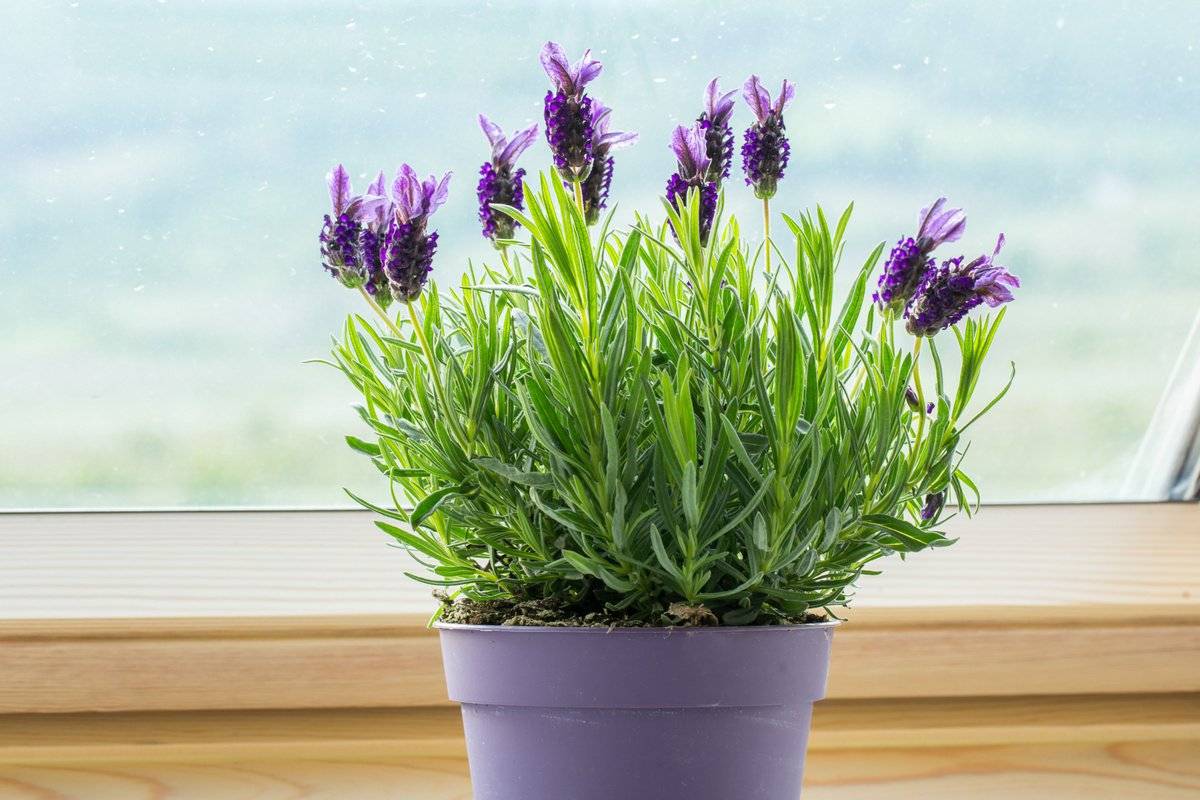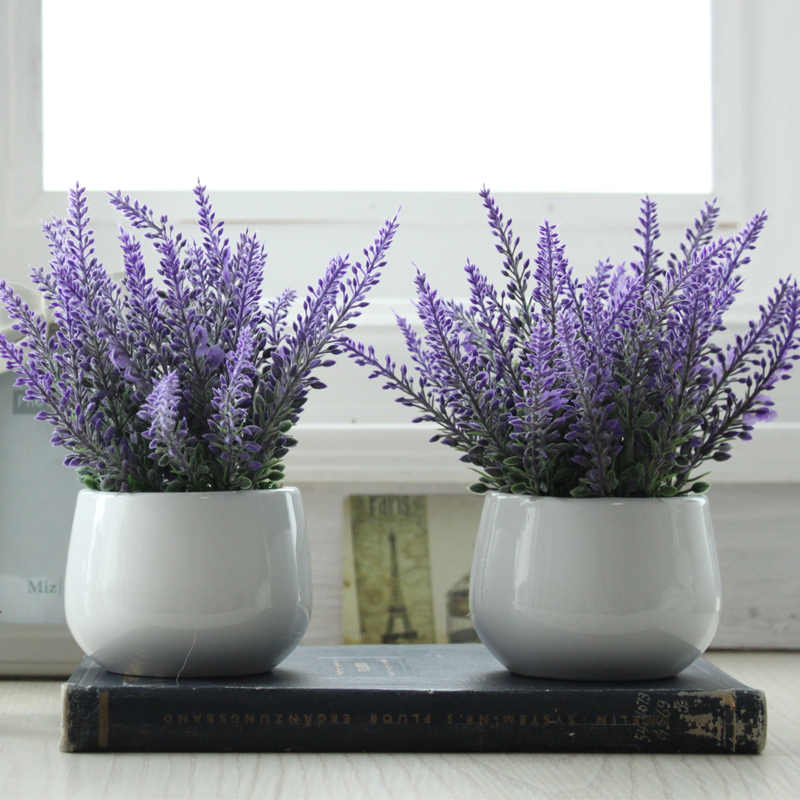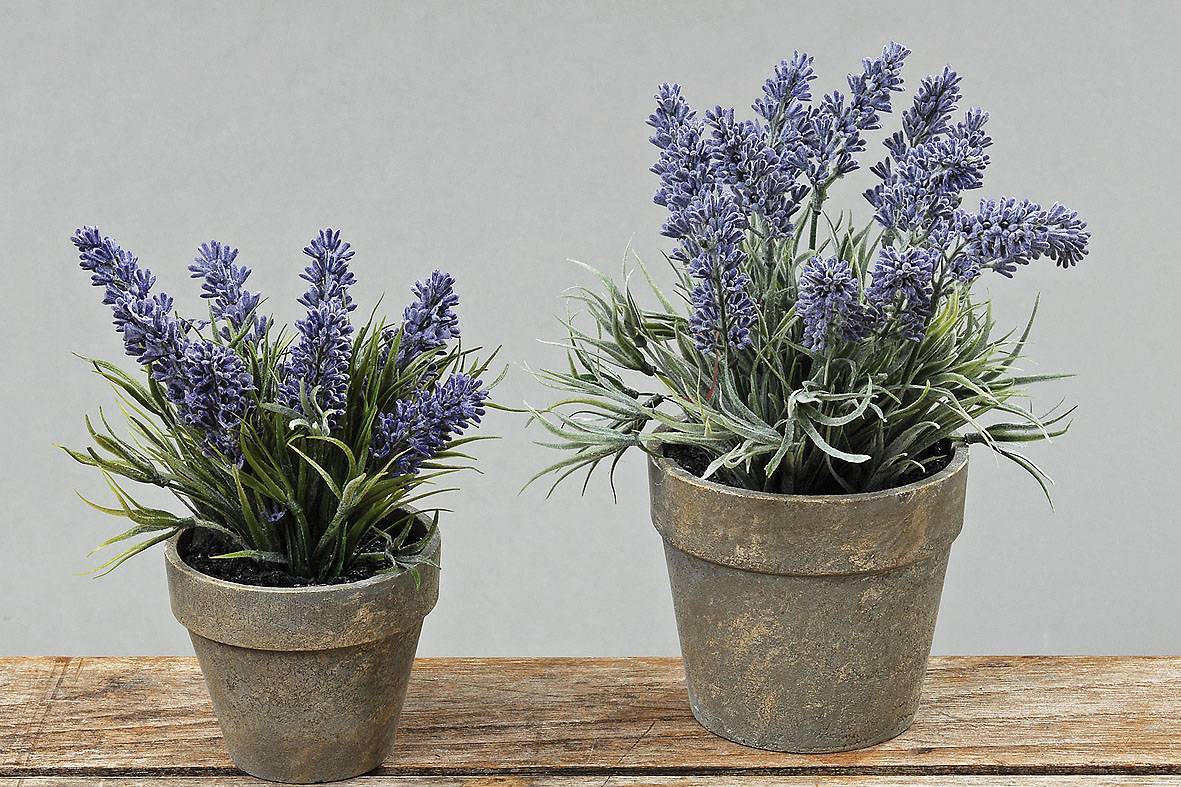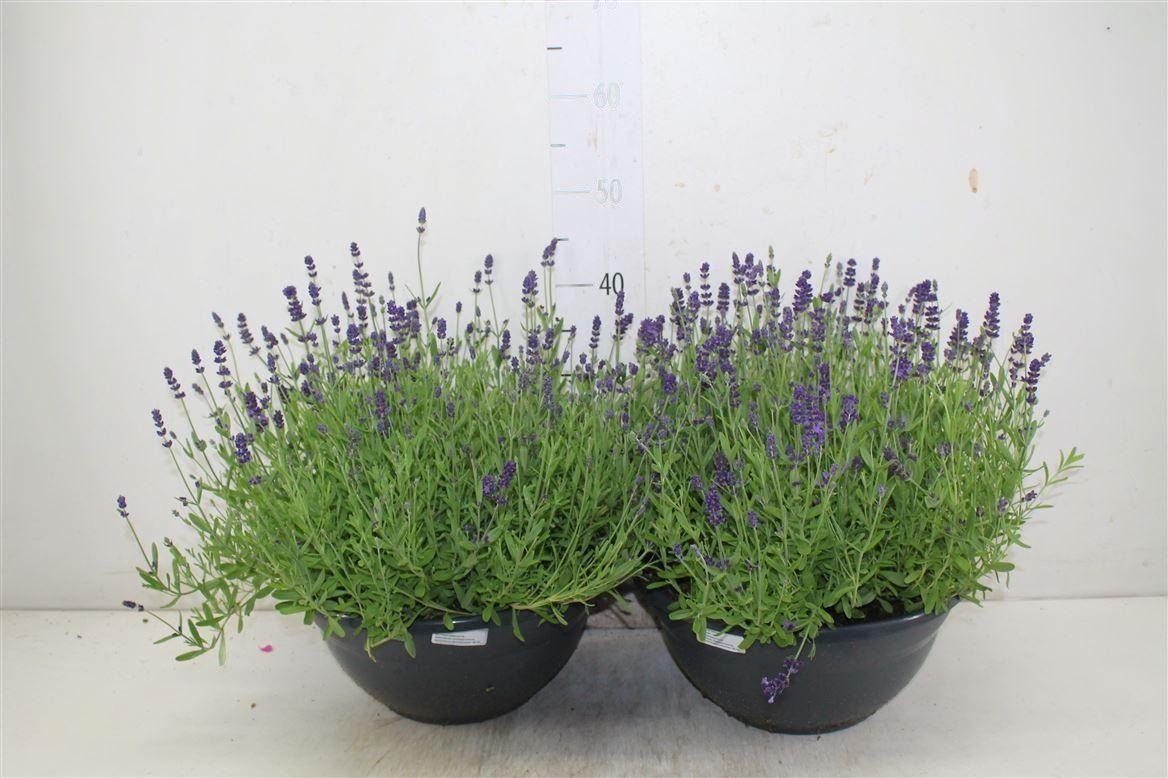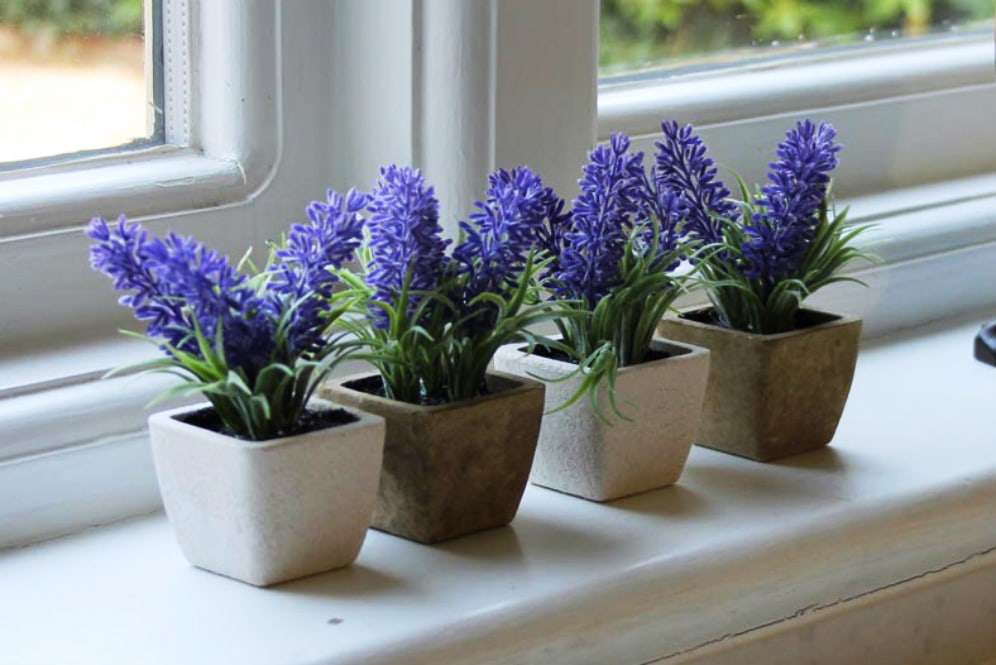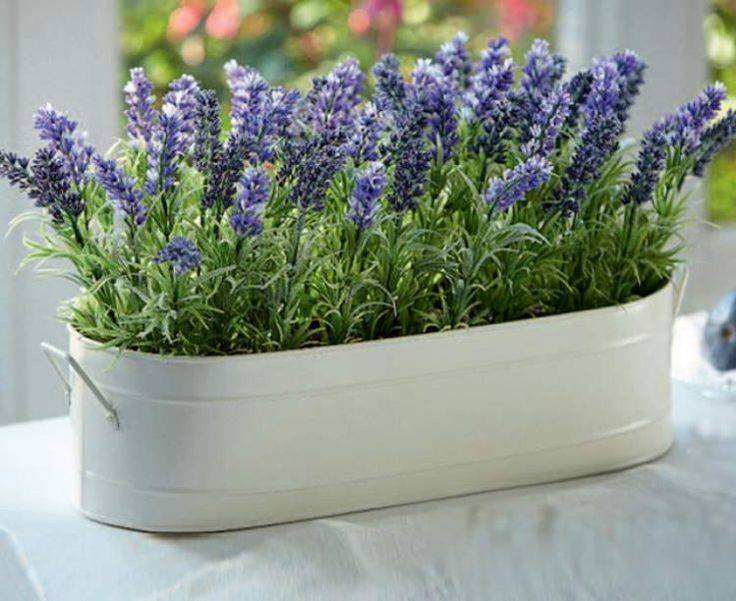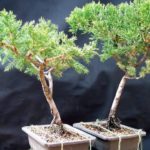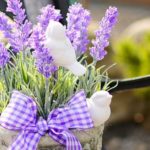Lavender is a famous indoor plant that originates from the Mediterranean. This shrub requires a lot of free space and good lighting. Lavender varieties for growing in a pot do not exceed 80 centimeters in height. They are characterized by silver-green leaves and purple flowers. In order for the crop to constantly bloom beautifully and delight you with bright greenery, it is important to follow the rules of care.
Description of the plant
Indoor lavender is a herbaceous perennial plant from the Lamiaceae family. The above-ground fragments of the culture contain many essential oils. The flower has strong shoots and opposite lanceolate leaves. In different varieties they may differ in the severity of the ebb.
The color of the foliage varies from cold and almost emerald tones to warm herbaceous shades. There are also bushes with silver-gray leaves. Depending on the type, bushes can reach 50-80 centimeters or have more compact sizes. In any case, they seem quite dense and elegant.
Lavender usually blooms in summer. However, you can find flowering indoor plants on sale already in the spring. During this period, small tubular flowers appear on them, which form complex spikelets of inflorescences. Due to the fairly large distance between the whorls, they look very elegant. The color range of lavender includes a variety of shades of blue-violet - from pastel whites to dark, rich shades.
Is it suitable for growing?
This heat-loving plant is perfect for growing indoors. It is important to provide the crop with sufficient water and light. It is imperative to ensure that the room is warm and there are no drafts.
What varieties to use
Not all types of plants can be grown at home. For planting in pots, you should choose the following varieties of lavender:
- English - also often called narrow-leaved or spikelet. The culture reaches a height of 1 meter. Flowering occurs at the beginning of summer. This variety is an ornamental green shrub that looks great in a wide pot or planter.
- Broadleaf – This hybrid is often called lavandin. It is characterized by low resistance to cold. Therefore, the crop is often grown on terraces or balconies. It is not recommended to plant it in open ground. This type of lavender has large and beautiful inflorescences that appear on the bushes at the end of July.
- Cutted - this lavender is characterized by a pronounced aroma. It has large flowers of rich purple color. Under natural conditions, this species is found in Turkey and Spain. In Russia it is grown only in pots.
- Stekhadskaya - this species is characterized by bushes of compact size. The flowering of the crop begins quite early. Decorative inflorescences appear between March and June. At the end of summer, this type of lavender may bloom a second time.
- Toothed - this plant variety is characterized by neat small sizes. It has silvery leaves and large flowers. This variety needs warmth, so it is usually grown at home.
Preparing conditions for the plant
Lavender is considered a rather demanding crop. Therefore, for its normal development it is important to create optimal conditions. It is worth considering the following:
- Pot Sizes – Lavender grows well in large containers. Their volume should be at least 2 liters. Ceramic pots are considered the best option. Tall cylindrical containers are suitable for single bushes. At the same time, for group plantings it is worth choosing long containers. It is important that each container has drainage holes to remove excess moisture.
- Soil quality – light and loose soil is suitable for planting the crop. A suitable substrate can be purchased at a gardening store. You can also do it yourself.To do this, garden soil must be mixed with sand and humus in a ratio of 3:1:2. The prepared substrate must be sifted and poured with a solution of potassium permanganate. This will help disinfect it and make it more loose.
- Illumination of the room - it is important to provide the crop with sufficient light. Otherwise, it will not be possible to achieve its flowering. In cloudy weather, the plant needs additional lighting. In winter, it is also worth using artificial lighting. The best option for this would be a fluorescent lamp. It is important that the daylight hours are 8-10 hours.
Planting methods
You can plant lavender in different ways - seeds, cuttings, layering. The seedling method is also a good solution. It is worth considering that each of the options has its own pros and cons.
Cuttings
In this case, it is necessary to separate the shoots from an adult bush and make cuttings from them. Subsequently, they can be planted in the ground. To plant a plant, you need to do the following:
- Cut annual shoots from an adult crop.
- Divide the cuttings into small fragments measuring 10 centimeters.
- Cut the bottom at a 45 degree angle. It needs to be treated with a root growth stimulator.
- Plant the cuttings in a substrate based on sand and peat, which are mixed in equal parts. They need to be covered with film and left to take root.
- After the roots have formed, prepare the containers. To do this, you need to take clay pots with a diameter of 25-30 centimeters and place drainage on the bottom.Its functions can be performed by sawdust, nutshells, small stones or shards.
- Prepare the soil. To do this, you need to mix leaf soil, sand and humus in a ratio of 3:1:2. It is also worth adding a little lime to the composition.
- Pour the prepared substrate into the pot.
- Plant rooted cuttings.
This method has a number of advantages. These include the following:
- ease of use;
- no need for special knowledge or experience;
- high rate of seedling survival and rapid onset of flowering.
However, this method also has disadvantages. The main disadvantage is the need for an adult culture to obtain cuttings.
Seeds
The easiest way to grow lavender is from seeds. To do this you need to do the following:
- Carry out the stratification procedure in the cold. It takes 30-40 days. To do this, you need to transfer the grains with moss or peat, moisten them a little and place them in the cellar or refrigerator. In this case, the temperature should be +5-6 degrees.
- Fill the seedling containers with a composition based on sand and peat. It is also recommended to add a small amount of crushed shells to the substrate. It is important to ensure that the soil has a uniform consistency. Therefore, it needs to be mashed well and sifted through a sieve. If lumps remain in the soil, the seeds will not sprout.
- Plant lavender seeds 2-3 centimeters into the soil.
- Cover the crops with film and put them in a cool place.
- After 2 weeks, move the container to a bright place. In this case, the room temperature should be +15-18 degrees.
Depending on the number of seeds, seedlings will appear after 30-40 days. Seedlings 2-3 weeks old need to be planted into a larger container for growing. After this, they need to be transplanted into separate pots.
Seedlings
This method is used when purchasing lavender in the form of seedlings. The technology is also suitable for growing crops by seed. Usually the bushes in this case are small in size. Therefore, they require the use of small pots at first. Their size should be 3-4 centimeters larger than the lump of soil.
To plant lavender using the seedling method, you need to do the following:
- Pour drainage into the bottom of the container. This could be expanded clay or gravel. It must be placed carefully so that the holes remain open. Thanks to this, water for irrigation will not accumulate in the pot, and air will remain below.
- Fill the container with substrate.
- Make a hole in the center and water the soil.
- Plant a bush in the hole and sprinkle it with soil substrate.
- Water the lavender with a growth stimulator. For this you can use Zircon.
This method is considered quite simple. At the same time, it provides quick results. The culture takes root in a short time.
By layering
Layerings are the outer shoots of a lavender bush, which are specially rooted into the ground. To propagate a crop using this method, you need to do the following:
- Bend the shoot to the ground in March or April and secure it with a special slingshot.
- Cover this area with soil and water it.
- Root formation will begin soon. After 2 months, this area can be separated from the mother plant.
This method has a number of advantages. It is simple and reliable. Reproduction of lavender by layering always gives good results.
The nuances of transplantation
Lavender needs regular replanting into a new container. In this case, the root system will be able to develop normally and will not rest against the bottom. The bush needs to be replanted annually. This is done before active growth begins.
However, sometimes lavender can be replanted at any time. In this case, the flower needs to be provided with high-quality care, moderate temperature and high humidity. Transplantation promotes rejuvenation of the crop and activates its growth processes.
When replanting a crop and choosing the optimal container, it is important to consider the size of the roots. The new container should be 5-7 centimeters higher than the previous one. It is important that the root system does not reach the walls of the container. This will ensure normal root development.
The minimum diameter of the pot is 30 centimeters and the volume is 2 liters. The depth of the container should be such that the roots can develop normally until next year. In this case, the depth should slightly exceed the diameter of the container. It is also important to consider that lavender is more suitable in natural pots - made of clay or ceramics. The holes in them should be quite large or frequent.
If we talk about the substrate, the plant needs light and non-acidic alkaline soil. When making your own substrate, you need to use the following components:
- universal flower soil;
- sand;
- peat;
- lime or wood ash - added in the amount of 1-2 teaspoons.
Technology
For lavender transplantation to be successful, you need to prepare the following:
- a pot of suitable size;
- drainage - for this it is permissible to use expanded clay;
- soil mixture;
- growth stimulator "Zircon" - used to moisten the soil after replanting.
First you need to pay attention to preparing the pot. To do this, it is recommended to do the following:
- Organize a drainage layer. To do this, you need to pour 2-4 centimeters of expanded clay onto the bottom of the container.
- Add some soil and make a hole. It should match the diameter and depth of the previous container.
After this, you can start transplanting. To make it successful, you should do the following:
- Remove the bush from the old container. To do this, it is recommended to turn the lavender leaves side down. It is advisable to water the soil first.
- Place the bush in the prepared depression so that the surface of the old soil is not covered with new substrate.
- Sprinkle with prepared soil.
At the end, the transplanted bush needs to be watered. To do this, it is recommended to do the following:
- Make a Zircon solution. To do this, it is recommended to take 10 milliliters of the drug for 5 liters of water at room temperature.
- Water the soil generously. This should be done along the edges of the pot.
- After the moisture has drained, fill the voids with soil and compact them a little.
Lavender care
Adult plants need quality care. In order for lavender to develop normally and produce abundant color, it requires high humidity. If necessary, you can place a small container of water nearby.
The air temperature in the room is of great importance. It should be +20 degrees. The room must be regularly ventilated. In winter, it is recommended to remove the flower away from heating sources. Otherwise, the greens will begin to turn yellow and dry out.
Lavender care also includes the following components:
- Watering – it is recommended to water lavender seedlings daily. This should be done using a spray bottle. It is recommended to water adult plants less often. This is done as the soil dries.For watering, you should use warm, settled water. After this procedure, the soil in the container must be loosened. This will prevent the formation of a dense crust and provide the root system with nutrients and moisture.
- Fertilizing helps to preserve the decorativeness of the crop. In the warm season, fertilizers must be applied at intervals of 15-20 days. With the arrival of autumn, the use of fertilizing is stopped. Combined flower preparations should be used as fertilizer. In spring, lavender is fed with nitrogen substances. At the stage of bud emergence, bushes require components such as potassium and phosphorus.
- Pruning – mature plants need systematic pruning. This stimulates the development of new shoots and flowering of the crop. For pruning, you should use disinfected tools.
Pest Control
Small pests pose a great danger to indoor flowers. The most dangerous parasites include:
- Spider mites - they enter the home on clothes and shoes. When bushes are infected, a thin white cobweb appears on them. After some time, the plants dry out. Fitoverm and other similar drugs will help you cope with ticks.
- Aphids - often attack lavender. Folk remedies help to cope with insects. Usually the flower is treated with infusions of marigolds or nightshades. If this does not help, you should use chemicals.
Pros and cons of the plant
The main benefits of lavender include the following:
- pleasant aroma - helps to cope with headaches and has a calming effect;
- high content of essential oils - they are used in medicine, perfumery, cosmetology;
- Possibility of use in cooking - lavender is often added to salads, baked goods, fish and vegetable dishes.
At the same time, the culture has practically no disadvantages. The only disadvantage is the risk of individual intolerance to the sharp bitter aroma of flowers.
Lavender is a fairly common plant that can be grown at home. In order for the culture to develop normally, it is necessary to carry out planting work correctly and provide the plant with proper care.

